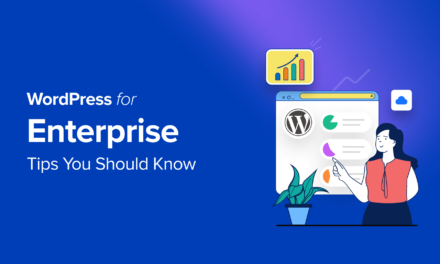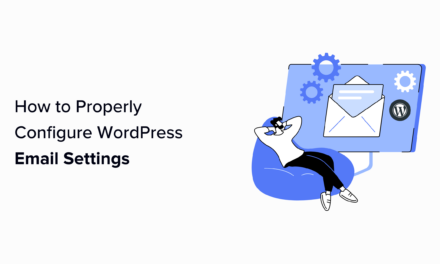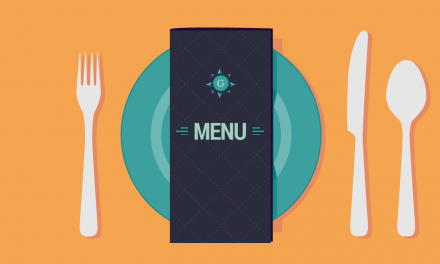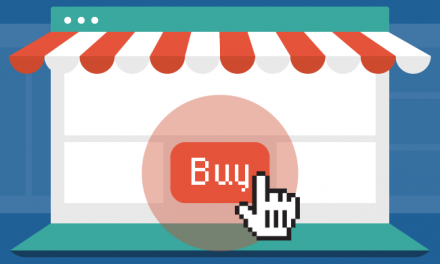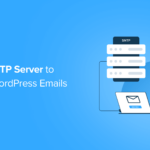Creating an email newsletter can be a great way to provide valuable content for your customers and build a loyal following. The challenge is convincing someone to open their inbox to you in an overcrowded digital world…
Start an email newsletter they said…
Create a simple sign up form and watch as new subscribers come FLOODING in they said…
It will be EASY they said…
If only it were that simple!
Then we’d all be swimming in more email subscribers than we can handle.
But sadly, as far as I’m aware, this is not the case.
Therefore, if you…
- Think your amazing email newsletter deserves more subscribers than it currently boasts.
- Are looking to create an optimized newsletter signup form or page that converts better than your current effort.
- Want to outdo your annoying competitor (let’s call him Steve) who constantly brags about the tens of thousands of subscribers he has (typical Steve).
- Are tired of potential customers constantly bailing out of your current opt-in form or sign up page like the flash.
Then stick around…
Because in this article we’re going to look at the simple conversion tactics high level companies use to boost their newsletter and list sign-ups.
We’ll also talk about what NOT to do, and what might be causing potential customers to hastily exit your opt-in… never to be seen again!
On that sombre note, let’s kick things off with:
Why Your Newsletter Sign Up Pages Aren’t Converting
Signing up to a new email list or newsletter is a big commitment for most people.
As you know, some lists are a no brainer to sign up for, while others definitely require some vetting before you hit that subscribe button.
Aside from trust issues, the reality is that most people are already overwhelmed by the emails already flowing into their inbox on a daily basis.
So why should they let you into their lives?
Here are three truths about content in this day and age according to Professor John Lavine of Northwestern University:
The 3 Truths That Shape And Limit Our Content:
- “There is an ever-rising tidal wave of information and it will continue to rise forever.”
- “Everyone you want to reach has 1440 minutes in their day; not a minute more.”
- “The world is becoming ever more complicated, but people will give you their time and attention if you give them more of what they want.”
The lesson here?
People Will Let You Into Their Inboxes Providing You Give Them What They Want
However, you also need to be aware of the things that may scare potential subscribers off.
And on that note, here are some common reasons people might be running for the door instead of signing up…
They’re Afraid You’re Going To Spam Them

No one wants their inbox flooded with spam or unwanted emails.
It’s also the number one reason users will unsubscribe from your list, or hesitate to sign up in the first place.
To overcome this fear, try to be clear on what they should expect from you content wise, as well as frequency wise.
You’re Giving Them Too Many Form Fields To Fill Out



Yes, in general the more information you can capture from a customer the better. But not if getting those insights means you’re losing just as many customers!
Giving the user tonnes of fields to fill out is asking for trouble and likely to turn them off.
Remember you can always find out more information once they have subscribed.
You’re “Popping Up” At Inappropriate Times



Pop ups can be a tricky devil.
People love to hate them, however, they can still be effective if used correctly.
Just remember user experience and satisfaction should always come first.
For example, if a reader has been directed to an article page, it’s probably not a good idea to hit them with an entry pop up right away.
Why?
Because they’re there to read! Not sign up to your newsletter.
So it’s important to wait until the time is right.
In this case, you might want to employ a “scroll pop-up” which activates when a user has scrolled a certain distance down the page:



Another alternative is a “timed pop-up” which initiates once the user has been on the page for a certain amount of time.
This way you’re not interrupting the users intended experience, and they can still get the value they were originally seeking from the page.
They’re also far more likely to engage with your pop-up when they see it at a more appropriate time.
Okay Enough With The Bad Stuff…
Let’s look at some tactics and examples to help you get those subscribers flowing in…
5 Proven Conversion Hacks To Help Increase Your Newsletter Sign Ups:
1.Get Creative With Your Newsletter Forms And Landing Pages
When someone lands on your opt-in page they’re probably expecting the same thing they see everywhere else.
And although there’s nothing wrong with this (if it works), why not try spicing things up a little?!
Like this creative and self-aware example from Shinesty:



What’s great about this example is that the headlines instantly grab your attention.
They also do a great job of “going against the grain” so to speak, by pointing out “emails normally suck” and theirs don’t.
Although these statements could be backed up by a little more proof, overall, this sign up page is a great example of adding personality and being creative with your copy.
It also emphasises the importance of grabbing the reader’s attention and setting the tone of what’s to come.
2. KISS! (Keep It Simple Stupid)
As mentioned earlier, it’s best to keep your sign up forms as simple and brief as possible.
The idea here being to reduce as much friction as possible and to not overwhelm your potential customers.
You’ll also be far more likely to convert “on the fence types” who might not be totally convinced of the value you’re offering them.
But don’t take my word for it…
In one study participants replaced an 11 field form with a 4 field form. This simple change resulted in a 160% increase in the number of forms submitted, as well as a 120% increase in conversion rate.
Of course, you also have to take into account the quality of the forms.
But in general, the shorter you can make your signup form (while still capturing the necessary info) the better.
Here’s a great (and incredibly cute) example by Hipmunk:



3.“Sweeten The Deal” Of Signing Up To Your Email List
There’s nothing wrong with a good old fashioned ethical bribe to help tip on-the-fence prospects over the edge.
And the truth is few people can resist a good deal or discount.
In fact, according to a study by the Social Habit, 70% of people open emails from brands or businesses just to get their hands on a deal, discount, or coupon.
Typically you’ll see SAAS companies offering clever incentives to get users to sign up for their services.
Here’s an example from SEMrush:



And another signup form by Copytesting:



However, discounts and offers can also work for newsletter subscriptions.
As shown by this sign up form by TOMS:



In this particular example TOMS does a clever job of leveraging the products they sell and using a 10% discount as an incentive for people to sign up for their newsletter.
Land’s End also do a similar job:



If you’re using this tactic just make sure to provide relevant and helpful newsletter content.
Otherwise subscribers will simply opt out once they’ve taken advantage of the deal or incentive you’ve offered them.
4.Use Social Proof To Entice Newsletter Subscribers
Utilizing social proof in your signup forms or landing pages is another great way to increase conversions.
Social proof is effective in two ways:
1. It proves to the reader that they can trust that your newsletter is legitimate.
2. It also taps into people’s “FOMO” (fear of missing out).
After all, it’s one of our most basic instincts as humans to get the inside scoop, or to not miss out on anything we deem important.
In other words, if you can show that a number of people have signed up to your newsletter, it’s going to help alleviate the fears a potential subscriber might have.
It’s also gonna have them wanting to know what all the fuss is about.
Here are a few examples of newsletter opt-ins that use social proof:









5.Be Clear About Your Intentions And The Type Of Content You’re Offering
Providing your readers with irrelevant content is the quickest way to have them hitting that unsubscribe button.
That’s why it’s important to clearly communicate what kind of content they can expect.
The New York Times does a great job of this by giving readers a look at past newsletters:



This tactic is highly effective as it reassures readers will be receiving the kind of content they’ll be interested.
Another great thing about this sign up page is that it displays the different types of newsletters on offer.
This helps raise awareness and ensures users are signing up for the appropriate newsletter.
If possible, also try to mention how often readers can expect you to email them.
Especially if you plan to email them quite frequently, as this can be annoying for some people if they’re not ready for it.
Now Not To Brag Or Anything But…
If you want a near-perfect example of a newsletter sign up page that ticks pretty much all of the boxes…
Check out the sign up page of our very own quirky newsletter: the Whip!
We’re pretty proud of this one, and as you’ll see below it employs many of the tactics mentioned in this article:
A Simple Sign Up Form:



Value Prop / Social Proof:






Clear Expectations:



Overcomes Spam Objection:



Psst… Looking For A Free And Easy Way To Create Your Own Sign Up Forms?
Hustle makes creating pop-ups, slide-ins, and widgets for your website a breeze.
Learn more about this handy WordPress Plugin below:
Before We Wrap Up Let’s Recap…
If You Want To Increase Your Newsletter Sign Ups Remember To:
- Ensure your form suits your readers preferences, helps them through the sign up process, and delivers on your promise.
- Make sure your opt-in form is simple, to the point, and contains the fewest number of fields possible (where practical).
- Be clear about your intentions and what readers can expect from your emails.
- Ensure the copy of your form is clear, concise, and easy to read and understand.
- Use incentives and offers to sweeten the deal for your potential subscribers.
- Use social proof and FOMO as a way to build trust with your audience.
- Make sure you have fun with it! Create a form that reflects your brand, personality, and what you’re all about.
And Finally… Don’t Forget To Test!
Try a combination (or all) of the tactics mentioned in this article.
Certain tactics may work better for some niches, businesses, and newsletters than others.
The true test is in the results they bring in!
Be sure to let us know what works best for you.
1.6 million WordPress Superheroes read and trust our blog. Join them and get daily posts delivered to your inbox – free!
Tags:




